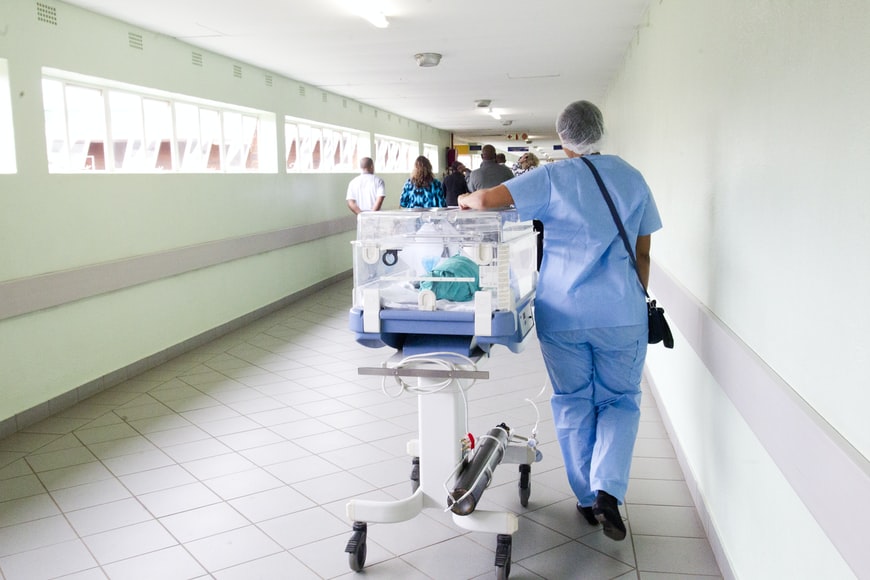
Hospital maintenance workflows are delicate — there is no room for errors, and all operations must comply with several regulatory requirements. Maintenance managers strive to streamline maintenance schedules and control maintenance budgets while managing technical teams and vendor coordination.
Efficient hospital maintenance workflows ensure the smooth operation of healthcare facilities and reduce equipment downtime, minimizing disruptions to patient care. How can hospitals maximize the efficiency of maintenance workflows and overcome predominant maintenance challenges?
Digitize asset management
Hospitals possess a wide variety of resources, such as lab diagnostic devices, air conditioners, escalators, and firefighting equipment — to mention a few. Additionally, they have more complex items like life-support machines, oxygen production plants, and radiology devices. That’s exactly why they should keep tabs on each piece of equipment and have a comprehensive asset list.
An effective asset management system should hold equipment-specific information like:
- name and location of an asset
- manufacturer or supplier and date of manufacturing/installation
- spare parts inventory.
The positive growth trend of the digital asset management market presents endless opportunities for hospitals to streamline maintenance workflows. By digitizing asset management, maintenance teams will:
- locate equipment and facilities faster
- track the working conditions of all assets
- strengthen data-driven maintenance initiatives
- reduce administrative tasks and put their energy into actual maintenance work.
Maintenance teams leverage digitized asset records for maintenance planning and scheduling. They can specify spare parts requirements by running a quick search using unique equipment identifiers. With this search, they can pull accurate part numbers and identify where to source them. This simplifies maintenance planning and ensures no asset remains unattended when technicians cannot locate them.
Implement a Computerized Maintenance Management System
Maintaining an expansive portfolio of hospital equipment and facilities can be challenging. Maintenance professionals deal with ever-changing maintenance schedules, complex maintenance, repair and operations (MRO) inventories, and unpredictable demand for healthcare equipment.
Staying on top of hospital maintenance means technicians and managers should balance equipment and facility maintenance amid several dynamics that influence workflows.
A computerized maintenance management system (CMMS) is a cloud or mobile-based solution beneficial for automating and centralizing various workflows. It is vital for maintenance planning and scheduling, inventory and supplier management, maintenance staff management, and team collaborations.
CMMS solutions revolutionize hospital maintenance in various ways.
- Centralize work order management — maintenance teams receive multiple work requests from different departments. Maintenance managers must prioritize the work requests and distribute the workload among employees evenly. A CMMS solution provides a simple means to create work orders, prioritize maintenance work, and track the progress of multiple workflows.
- Manage maintenance data — CMMS solutions store vast amounts of data. They keep detailed maintenance logs specific to each piece of equipment or facility. This data is beneficial for monitoring and improving the quality of maintenance work, tracking costs, and managing resource allocation. Hospitals can utilize historical maintenance data to demonstrate compliance with statutory regulations.
- Automate maintenance workflows — CMMS systems enhance maintenance schedules. They generate automated, timely maintenance alerts to reduce the probability of deferring maintenance. The systems also generate digitized maintenance reports, reducing paperwork.
Leverage Proactive Maintenance
Modern hospital maintenance programs focus on data-driven practices to prevent equipment and facility breakdowns for uninterrupted patient care. Using defective healthcare equipment and facilities increases non-compliance with statutory regulations and increases safety risks in hospitals.
Hospitals can combat equipment defects by implementing appropriate proactive maintenance measures — preventive and predictive maintenance — depending on the intensity of maintenance work and the criticality of equipment and facilities.
Preventive maintenance implementation involves regular asset care over fixed timelines. These measures could include equipment inspection, calibration, lubrication, or replacement of select parts.
On the other hand, predictive maintenance leverages sensor data to monitor hospital equipment and facilities in real time. It relies on advanced technologies like the internet of things (IoT), cloud computing, and advanced mobile networks to enhance data transfer speeds.
Proactive maintenance streamlines hospital maintenance by:
- Reducing emergency breakdowns — emergency breakdowns can be disruptive and time-consuming. Maintenance workloads spike immediately, straining technicians and increasing the probability of making errors when rectifying defects.
- Increasing the predictability of maintenance schedules — hospitals implement proactive maintenance over fixed timelines or asset utilization frequencies. Such measures improve asset efficiencies and maintenance planning, resource allocation, and workforce management.
- Increasing asset lifespan — periodic asset maintenance extends the useful lives of hospital equipment and facilities. This improves maintenance workflows by reducing the need for significant repairs and replacements, which can be costlier and more labor-intensive.
Streamline maintenance audits
Hospital maintenance managers should conduct regular maintenance audits to evaluate the efficiency of existing maintenance programs and identify opportunities for optimizing workflows.
These audits are data-intensive and require access to maintenance data as well as the utilization of advanced data analysis tools. Internal maintenance audits are vital for demonstrating a facility’s compliance with state and federal regulations.
Hospital maintenance teams should update work procedures, operating standards, and staffing as assets increase or age. Maintenance managers should develop effective audit schedules to:
- identify bottlenecks in maintenance workflows
- explore the prospects of digital technologies in asset maintenance
- address skilled labor shortages and training needs
- identify opportunities for continuously improving and streamlining workflows.
Effective maintenance audits based on digitized maintenance data unearth maintenance backlogs and offer insights for improving the efficiency of maintenance processes.
Summing Up
Achieving efficient hospital maintenance workflows means uninterrupted asset performance, increased safety, and better patient care.
Developing efficient maintenance programs takes time and requires the collaborative efforts of maintenance technicians, hospital management, and external partners. By implementing various digital technologies and encouraging continuous improvement across the board, hospitals will improve their maintenance workflows.
Invest in advanced maintenance technologies to unlock more efficient maintenance workflows.
Bryan Christiansen is the founder and CEO of Limble CMMS. Limble is a modern, easy-to-use mobile CMMS software that takes the stress and chaos out of maintenance by helping managers organize, automate, and streamline their maintenance operations.